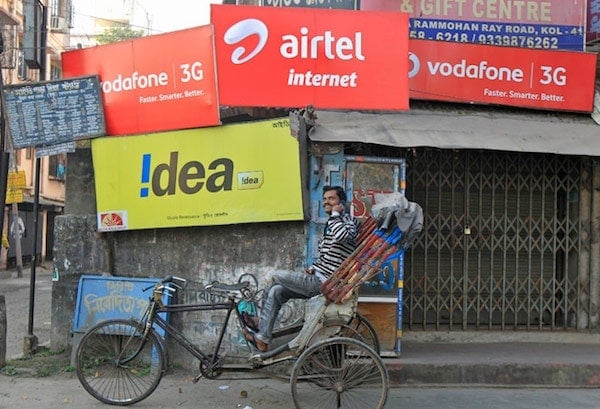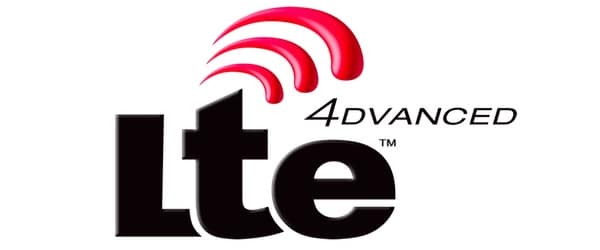1. Quad Play/Triple Play
Quad Play is something that has swept the whole of Europe in a big way. Quad Play is when a single company provides you cellular connectivity, TV, landline and fixed broadband. A lot of companies in Europe are adopting Quad Play or Triple Play strategies. The trend is dominant to such an extent, that stand alone mobile operators are having a tough time in Europe. Broadband and cellular companies in Europe are increasingly cross-selling each other’s offerings so as to provide a complete package. As far as the Indian market is concerned, there are two Quad Play players in the market and they are Airtel and Reliance Communications (not Jio). Both of them provide landline, fixed broadband, cellular connectivity and even DTH TV. BSNL and Jio are Triple play players in the Indian market. BSNL provides landline, fixed broadband and cellular connectivity while Jio is expected to provide fixed broadband, cellular connectivity and TV as well. Although the cellular and fixed broadband offerings of Jio have been made public, it’s widely believed that Jio also has an IPTV offering that runs on an IP set top box powered by Android TV. PC: http://blog.karianandbox.com/ While Airtel, Reliance, Jio and BSNL have the offerings in place to be a Quad Play or Triple Play provider, they don’t seem to be taking advantage of it. Quad Play and Triple Pay have several advantages when bundled together. They can help reduce churn, improve customer satisfaction and provide more insight into customer behavior. For example AT&T, a US telecom operator had recently acquired DirecTV and gave its customers a chance to avail unlimited LTE plans without any cap on AT&T. Similar kind of synergies are yet to be seen in India. For example, there’s hardly any benefit given to Airtel cellular customers if they have an Airtel DTH connection and similarly, there’s hardly any benefit given to BSNL cellular customers if they have a BSNL fixed broadband connection. There’s a real opportunity for Indian companies to bundle various connectivity offerings in a single package going forward. It remains to be seen when they’ll adopt bundled offerings but bundled offerings is their best bet as of now to reduce churn and cross-sell their products.
2. Content
The fear of being a dumb pipe is rampant across all telecom operators in the world. They don’t just want to be the connectivity providers but they also want to be the content providers. Different telecom operators have different strategies when it comes to content, but they all agree that they need to be in the content game in one way or another. As of now, there are two strategies being adopted by the telcos worldwide. One is that they either partner up with someone who already owns/licenses content or they build/license their own content.
For example, in the US, both Verizon and AT&T own content. Verizon has acquired AOL and Yahoo which has given it a huge well of content to draw from. Verizon’s app Go90 plans to aggregate Verizon’s video content in one place and monetize it via ads. As for AT&T, their recent acquisition of DirecTV has given them a lot of content. AT&T plans to introduce three video streaming apps in the coming months which would feature content they got as part of the DirecTV deal. Since zero rating is allowed on a case by case basis in the US, both Verizon and AT&T plan to zero rate their video streaming apps. In India, Airtel and Jio seem to have take the route of licensing or owning content all by their own. Jio seems to be the most aggressive in case of content as they have licensed quite a lot of music, TV shows and movies for their Jio suite of apps. In fact, the JioTV app literally puts an entire DTH or cable connection inside an app. Airtel similarly has its suite of Wynk apps. The similarity over here is that operators are willing to make a huge bet on content. Verizon has spent close to $6-8 billion on its purchase of AOL, Awesomeness TV and Yahoo for content purposes. AT&T has spent above $20 billion for DirecTV and I can bet that Jio also is spending a lot licensing content for its various apps. There are operators that don’t really own content but prefer partnering with content providers. T-Mobile is the best example of this as seen by their BingeON and MusicFreedom programs. T-Mobile doesn’t really license or own any content, but they are willing to partner with content providers and zero rate their offerings. Vodafone and Idea are similar in India. Vodafone and Idea don’t really have their own music or video apps, but they provide free subscription of third party video apps like ErosNOW on certain plans.
3. Number of operators
Most International telecom markets have just 4 private operators or 5 in the best case scenario. It’s necessary to highlight that I’m talking about full fledged MNOs rather than MVNOs. India, owing to low entry barriers, had at one point of time as many as 10-13 operators in some circles. That has all changed now. Consolidation has sped up in the past two years. MTS, Videocon and now even Aircel have exited the telecom market. I soon expect Telenor and Tata Docomo to exit as well. Unless a telecom operator has 4G on a pan India basis and has a revenue market share of at least 10-12%, sustainability will not be possible in the Indian telecom market. I have already detailed in my previous article how the voice market will soon be redundant in India. As far as data is concerned, there’s no difference in price between 3G and 4G data packs. The price of 4G smartphone is also on free fall. Data is the future of India’s telecom market and 4G is what’s going to propel it. Laying out a pan India 4G network and its opex are not cheap. Only few companies have the balance sheet to make that possible. Just like International telecom markets, I expect even the Indian telecom market to be a 4-5 player market with the addition of state run BSNL and MTNL.
4. Parity in terms of network
Indian telecom operators are not only rolling out LTE, but are increasingly racing towards LTE-A or LTE-Advance to portray the superiority of their network. Airtel is on a carrier aggregation spree ever since Jio launched. First tested in Kerala, Airtel has now expanded carrier aggregation to Mumbai and Bangalore as well. Carrier aggregation is mostly a software upgrade if the operator has the required equipment in place to enable carrier aggregation. I expect Airtel to enable that in a lot more cities. Jio is also believed to be in a position where it can enable carrier aggregation since it has a combination of either 2300 MHz and 1800 MHz or 2300 MHz and 850 MHz all over India. In a lot of circles, Jio has 2300 MHz, 1800 MHz and 850 MHz bands, so there is a possibility of three way carrier aggregation if Jio upgrades their equipment in future. As far as I know, Jio as of now is capable of aggregating only 1800 MHz and 2300 MHz bands, as 850 MHz cannot be added to the mix as of yet. But if a future network upgrade is to take place, then Jio has the spectrum in place to enable three way carrier aggregation.
LTE has the most widely adopted cellular technology ever. It’s widely believed that every country on earth with the exception of countries like North Korea, Cuba, Iran etc will have LTE networks in place before 5G becomes a reality. While carrier aggregation in India is good, US telecom operators are upping the ante even more. Just the past week, T- Mobile announced that it would start deploying “256QAM, 4x4MIMO along with three way carrier aggregation“. I know that might sound like Greek and Latin, but I’ll try and break it down for you. Assume that the data transfer between your phone and the cell tower is basically a bunch of trucks transporting goods. 256QAM – 256 QAM are like big trucks that can carry much more good than other trucks(64QAM). Technically, 256QAM means that you can transfer more bits during transmission than 64QAM. 4X4 MIMO – 4×4 MIMO is like flyovers to speed up the number of trucks a particular road can handle. Assume someone decided to build four flyovers on top of each other, then there will be much more space/capacity for the trucks to move, letting them move at faster speeds. In technical terms, 4×4 MIMO is towers fitted with antennas that can simultaneously send and receive four different streams of data. Although very few phones support 4×4 MIMO, as of now only the Galaxy Note 7 supports 4X4 MIMO out of the box. A software update might enable 4X4 MIMO for Samsung Galaxy S7 and Galaxy S7 Edge as well. Carrier aggregation – This is simple and I guess many people already know what it is, anyhow to put it in trucking terms, carrier aggregation is basically several lanes. The more the lanes, the more the capacity and the faster the trucks can move. Of course, India is still a long way from having “4x4MIMO, 256 QAM, three way carrier aggregation” networks but considering that 5G is still a long way to go, there is a lot of time for Indian telecom operator to further improve their LTE networks and Vodafone’s commitment to spend $3 billion, along with Airtel’s project leap should further help in this regard.
5. Tariff plans and their price
I expect tariff plans to start looking similar to that of international markets, voice calls and SMS being free and data is what you pay for. Jio already has plans like that, in fact Jio’s plans are very identical to that of AT&T’s earlier plans in terms of data allocation. Although, I expect the structure of plans to become similar to that of foreign operators, I expect the rate of those plans to be much cheaper here and this is where the scale kicks in. India is a country that’s very big and has a very high population density. The cost of operating a telecom network and covering a particular mass of land is pretty much fixed, barring regulatory differences of countries. So what really matter is ARPU and subscriber base. In order to give a better understanding take into consideration the below quote
Hopefully, you can now understand why population density plays a vital role in the prices set by telecom operators. One of the core reasons why India has been able to enjoy low voice rates was because of its population density and population that gave rise to telecom operators with subscriber bases of hundreds of millions. Same population density and population should help us enjoy lower data rates as well, but the problem with data is that it’s a platform that most people still don’t know what to make of unlike voice which is fixed end application.
Conclusion
As time passes by, the Indian telecom market will mimic international telecom markets to an even greater extent. Signs of this transformation are already visible. It’s safe to say that Jio has acted as the single most important catalyst in this transformation. There is going to be some imbalance during the transformation. I believe the imbalance is going to lie with voice. Traditional telecom companies and investors still aren’t ready to let go of voice and that will be the single biggest pain point for this transformation. Eventually, with a variety of external forces like device ecosystem, content ecosystem, differences in choice of primary medium of communication etc., I expect it to balance itself out.









